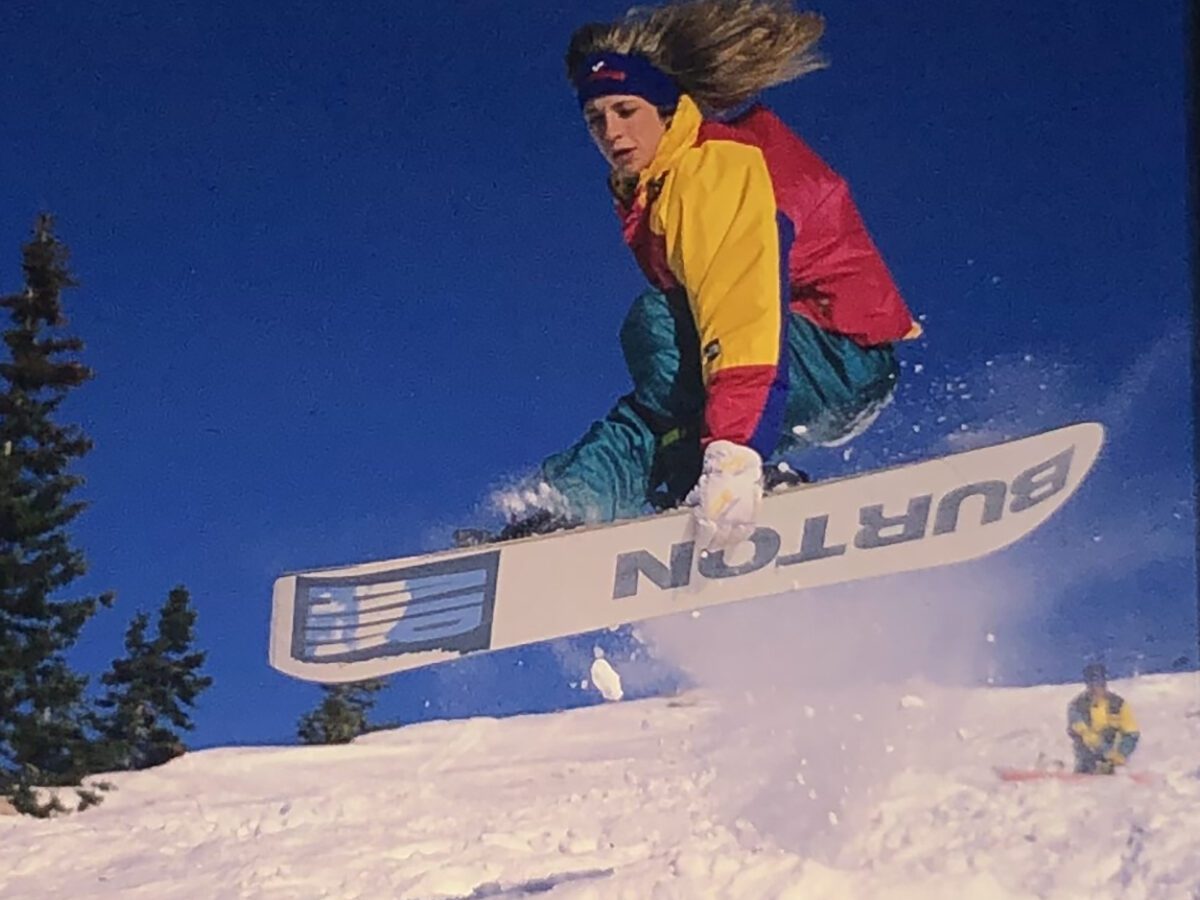Pioneer, Still Progressing: The Shannon Dunn Interview
INTERVIEW Mary T. Walsh
Last March, Shannon Dunn-Downing traveled to Stratton Mountain in Southern Vermont, tracing the lines of an annual pilgrimage she made in the 90s and early 2000s as part of the vanguard setting the course of freestyle riding via creative expression in the halfpipe. As one of the most impactful riders during that time, Shannon collected five US Open halfpipe trophies (two of them as overall champion), as well as plenty of other accolades, including X Games medals, World Championship titles, and podiums at Grand Prixes and Nippon Opens. She was the first US snowboarder to win an Olympic medal when she earned bronze at the 1998 Winter Games. She was the first woman to land a bevy of tricks in the halfpipe, including front and back 540s, front 720, and the McTwist. Her Sims sunflower board was the first marketed women’s pro model and it paved the way for a new category of women’s products. And she is a co-founder of Boarding for Breast Cancer, an organization of enormous impact. Along with all of this – which is also merely an abridged list of the Tahoe local’s accolades – Shannon is a mom to two boys with her husband, Dave Downing.
Then last spring, just over two decades since her last pipe win, Shannon stood on top of the podium at East Street Archives Homesick, a new annual gathering that’s as much about community as it is (friendly) competition. With longtime friends Tina Basich Haller and Tricia Byrnes on either side of her, Shannon took top honors in the Powers Retro Pipe contest, a celebration of East Coast halfpipe heritage, the riders who made the scene so legendary, and the next generation who is building on the existing foundation.
It was a full-circle moment. Yes, the stakes of the contest were different, but the underpinning of why it’s a good time to spend the day trading laps with friends was the same. Shannon never stopped snowboarding, but her priorities shifted to raising her family. Now, with both her boys in college, she’s back in the mix and on a tear: riding in World Quarters, supporting at The Uninvited Invitational, traveling the country with B4BC, joining in community events, and releasing an upcoming memoir about her life and career. Most importantly, she’s letting this next chapter be guided by an appreciation for the pure fun of it all, a dedication to strengthening community, and a relentless love of riding. She says she has re-entered snowboarding.
We couldn’t be more stoked that she’s back.
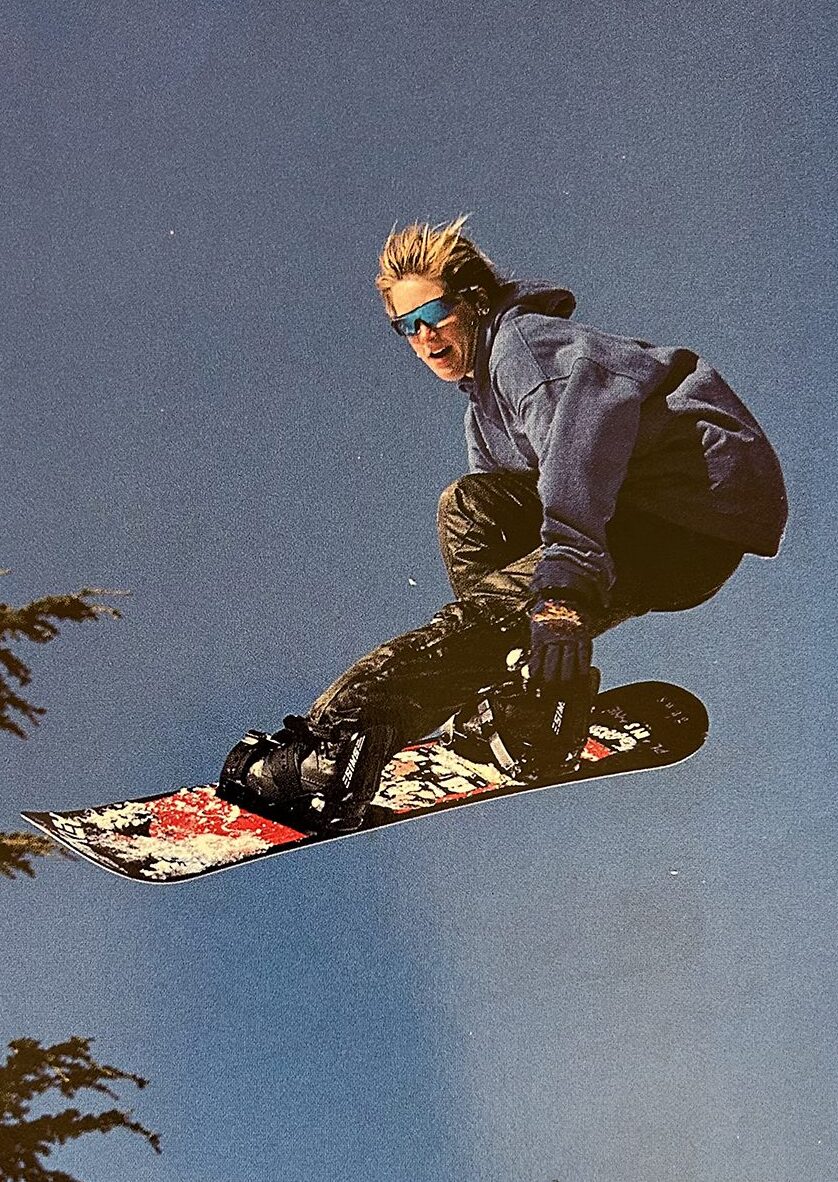
Earlier this year, you wrote a great op-ed for Slush the Magazine about the importance of the halfpipe and the need to build more accessible pipes. What prompted you to write that piece?
I was helping my friend Leslee Schader. Leslee and I rode for Burton back in the day together. She has a 13-year-old daughter, Andee, who is competing in contests, stepping up from USASA events to The Futures. Leslee was unable to come out for two contests at Northstar and Mammoth, so she sent Andee out, and I acted as her coach. I just love Andee. So it goes USASA, next step is Futures, then Rev Tour, then US Snowboarding. So at The Futures events, I noticed all these girls are riding slopestyle but none of them have ever had exposure to riding halfpipe. So I was like, “Where do you guys ride pipe?” Everyone’s saying they don’t have access to a pipe. I’m hearing from all the kids that nobody rides a pipe except for when they travel to a contest that has a 22-foot pipe. Then they’re all trying to race to train and do the best that they can. So that’s kind of where it came from, just noticing the reality that these kids aren’t riding halfpipes, and then thinking about what resorts have a pipe? It’s so limited.
It is. And of course, it’s really resource-intensive to build an Olympic-size pipe, but that’s why finding creative solutions to make halfpipe riding more accessible is such a hopeful idea. Smaller pipes, minipipes… Look at the draw that Homesick’s pipe event has, for example.
Yes, it encapsulates the snowboard community and really celebrates it. I think they’re cracking the code of bringing the history of snowboarding together with today’s snowboarding. They’re executing it in a way that is so awesome and so much fun. Historically, snowboarding halfpipe was where the skate style came into snowboarding. You could just be creative. It was where snowboarding could become more of an art form than this competitive, ski-racing thing. We wanted to veer away from skiing and be more like skateboarders, and I think the halfpipe was the perfect venue for that. And then it evolved, obviously. Once the pipe dragon was invented, that changed everything. People wanted to go bigger, pipes got bigger. I retired when the pipes were at 18 feet. The 22-foot pipe just is a different beast. Ha, I still don’t know how to ride those properly. I remember I was talking with Kelly Clark, and she said it took her like a year-and-a-half to totally relearn how to ride the halfpipe at that size. She’s like, “Oh, you would love it once you figure it out.” And I was like, “I don’t know if I can!” Ha. It’s a whole new beast and with that, I think we lost accessibility to the public, because it’s really expensive to build those. They have to be perfect to be safe. And then they’re also so scary and huge. I’m an Olympic halfpipe rider, and I don’t know how to ride this thing. That says a lot.
“We wanted to veer away from skiing and be more like skateboarders, and I think the halfpipe was the perfect venue for that. And then it evolved, obviously. Once the pipe dragon was invented, that changed everything”
22-foot pipes really started to proliferate around 2008, I think, right?
I don’t even know because I had kids in 2003 and ’04, and then I was a mom, and I just exited the sport. I have no idea what happened in the 2000s. I would catch the X Games here and there, but I really don’t know.
That’s a great segue, actually. Looking back at that time, what was that like for you, having kids and stepping back from competition and everything?
So, I had just gone to the 2002 Olympics. I got fifth and was disappointed. I remember seeing Trish Burns at the end, and we gave each other a hug, and I go, “I think I’m done. I’m ready. I’m going to have a kid.” She brings that up all the time because literally from that moment, I didn’t see her until twenty years later.
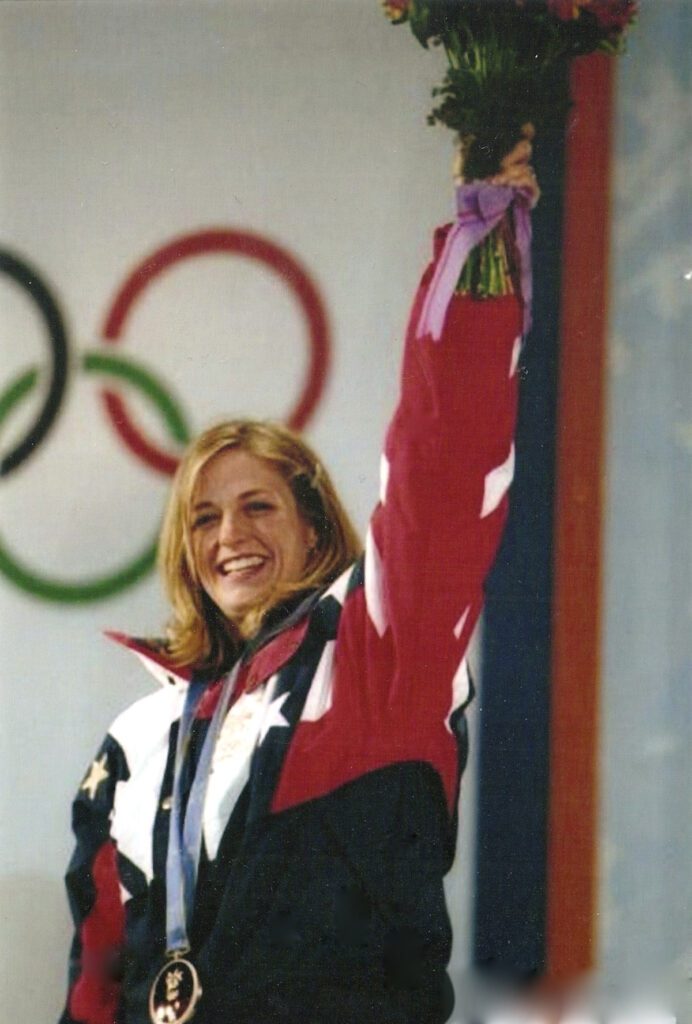
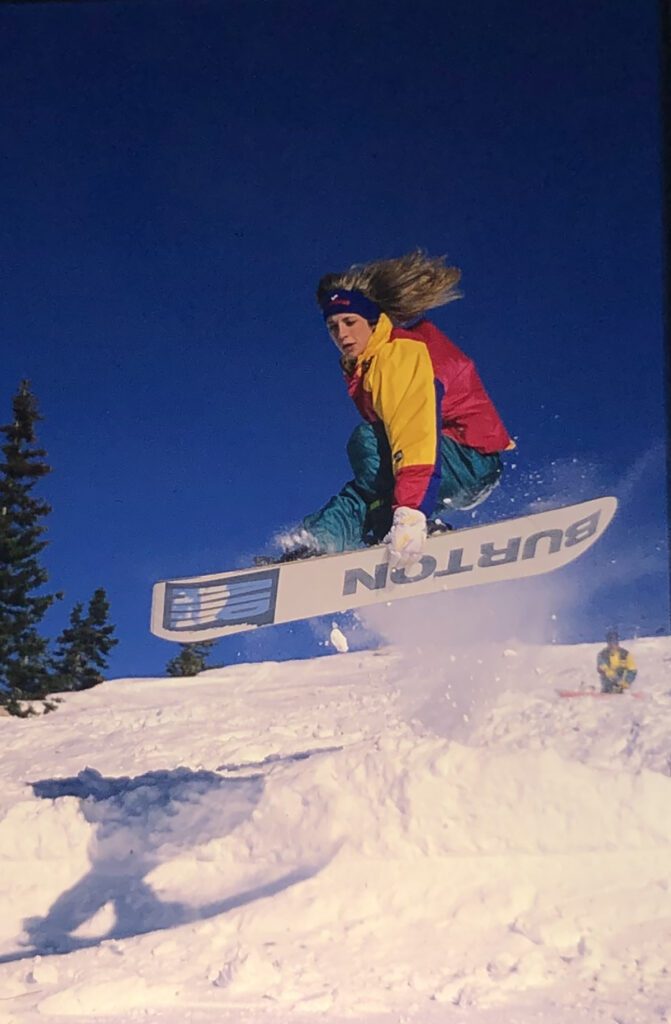
Wow.
That’s basically what happened. But that wasn’t really my intention. In 2003, I had my oldest son at the end of April. As soon as he was born, I was like, “My goal is to make it to the X Games.” I had from the end of April to February. I thought, That’s plenty of time. Well, I had all these random complications, like I had foot drop. After childbirth something happened with my nerve in my foot, and I couldn’t lift it up; it would just kind of hang there.
That sounds awful!
I first went to a chiropractor and he goes, “Well, this doesn’t come back.” And I thought, I need to go somewhere real fast and get different news. I went to an orthopedic doctor. He did a nerve test and said, “You still have electricity going through your nerve, so it will come back. It’s just going to take a little time.” That’s what I wanted to hear.
How long did it take until you that you could use your foot again?
A couple months.
“Coming out of that, I think the best place to be was on the floor in my kitchen because I started to figure out who I am apart from my snowboarding, apart from all that I did in the sport. I started to figure out what my purpose is.”
And you’re raising an infant at the same time.
Yeah. I was like, What the heck? So then, winter comes and we went up to live in Tahoe with the baby. I still am thinking that I’m going to make a comeback. My first day on the mountain, they had some rails set up. Dave’s watching the baby and I’m snowboarding by myself. I’m not wearing a helmet because nobody wore helmets then, except for at the Olympics. I went up a fun box and I just kind of slid off. I hit my head and got a concussion. I wasn’t totally out, but I rang my bell. I thought, This is not like all the women athletes that I’ve been hearing about having kids, and it’s working out for them. This is difficult for me. My mind and my body were not connecting. I had never experienced that. I really took my mind-body connection for granted my whole life.
When that’s all you know, I’m sure it’s shocking when things feel so unfamiliar.
Totally. I was only out from the spring until winter. That’s normal. You usually take the summers off anyway, so no big deal, right? But when I was back on snow, nothing was connecting at all. Whatever happened as part of childbirth, it wasn’t an easy comeback. And that took me quite a while to accept because I’ve been through injuries. I’ve had two ACL reconstructions. I came back stronger every time. But this was different, and I just couldn’t get my riding back in time. I had to realize, I can’t go to X Games. There’s no way. I can’t ride like I was riding.
Wow.
So that was really frustrating. On the business side, everyone was supportive, but I still felt tension. It was nothing that anybody said, but it was everything that I felt as far as the industry kind of frowning on me being a mom and continuing in the sport.
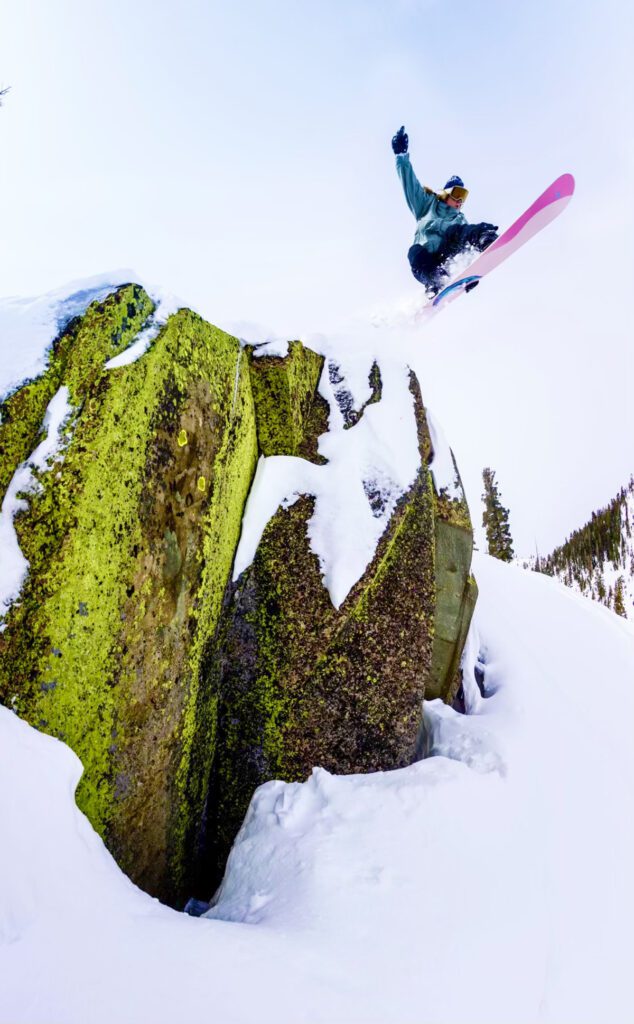
PHOTO AARON BLATT / COURTESY OF BURTON SNOWBOARDS
How was that for you mentally?
It was a different level that I hadn’t experienced, because now it was me questioning myself. Can I do this? My body wasn’t working for me like it normally did. I didn’t know how to deal with that. I’m only hearing “the Olympic athlete that has the kid and wins a gold medal”, she could do it. What’s up with me? But you know, everybody’s body is different. Everybody goes through childbirth differently; there are a lot of components at play with having kids, making a comeback, and all that. But at this point, nine months after I had Logan, I was pregnant again. So I was like, “Okay, I’m not going to go to those X Games.” But I couldn’t put snowboarding to rest. There was no way. I love it.
But there were some difficulties that I’d never experienced. My entire career before that was one open door to the next, and then the doors kind of closed. And then after having my second son, Dillon, in December of 2004, Dave was traveling, and I was like, I want to be a mom. If we can financially do this, this is the place I want to be. No regrets, until fast forward maybe a year-and-a-half down the road where I’m laying in my kitchen floor and bawling, I can’t do this. I don’t know how to be a mom. All of that just came pouring out of me. But that was my rock bottom, wondering, Who am I? What the heck am I doing? Coming out of that, I think the best place to be was on the floor in my kitchen because I started to figure out who I am apart from my snowboarding, apart from all that I did in the sport. I started to figure out what my purpose is.
It’s like your whole identity was so tied to this one thing, this one part of yourself.
And I didn’t even know it. You just get used to the accolades, the praise, and there’s nothing in that if you are a stay-at-home mom. Especially because I wasn’t in the mountains. No one had a clue that I was a pro snowboarder.
Were you guys living in Southern California when this happened?
Yes. If I’m in the mountains, people kind of know who I am. And that’s just dumb, even just saying this I feel kind of embarrassed. That’s just a total prideful thing. But I’m just saying, take Lisa Anderson as an example. What if she moved to somewhere like Chicago and nobody had a clue about her impact in surfing, that she’s a pro surfer. She’d have a whole new life without anyone knowing her history. I don’t know how to live a normal life, ha. I went from high school to pro snowboarding. So, it was just a real awakening. It’s been so good for me to come to know who I am, what I want out of life, what are the most important things to me in life. So, that’s kind of the overview.

How did you go from that existential feeling on the kitchen floor to understanding yourself in this new way?
With my friends who had babies, we collectively just got through it together. Finding my little community at home and understanding the importance of being a mother. To me, if you have kids, the number one thing that you can do is raise your children to be quality humans. Just to understand that was enough for me. And I was always trying to do side jobs and stay involved with Burton. Burton was great because they gave me opportunities. I could be a part of what they were doing here and there, which was great to keep my foot in snowboarding as I raised the kids. And once my boys went off to college, that’s really when I reentered snowboarding. The last couple of years, I’ve been a part of snowboarding a whole bunch more, which has been awesome.
What was it like when your sons both went off to school and you had more time to snowboard for yourself?
It’s a different way of snowboarding for me being a mom, when I’m out by myself. My kids are really good snowboarders now. When they were little, I’d be like the tail guide and Dave would take the lead. They’d follow after him, and I would just make sure they were okay. Now they’re so much better than me, ha. I still follow them, but they’re trying to encourage me to hit jumps and hit rails with them. So, I still kind of take the backseat. I’m focused on them. I guess it’s a parent thing, you know? I care about them more than me. And I’m stoked to just watch them and do whatever. But without them, say I go riding on my own or with Dave, I just feel free. I’m just thinking about my own riding. I don’t want that to come off negatively because I prefer, of course, to go ride with my family.
That doesn’t come off negatively at all. That makes total sense because when you’re with your kids, your mom instincts are so strong that you’re focused on their well-being. Also, you’ve dedicated so much of your life to them flourishing, so it’s probably the coolest thing to watch them do so on their snowboards. You’re putting them first, and then if you’re riding on your own, you can just focus on yourself.
Yeah, I like how you put that. So now, just to ride, it really brings me back to when I first started snowboarding. I love it so much, and now I love it so much more because I guess I must have missed it. Snowboarding is something that I feel a connection with. So, I felt that again. I’m a gung-ho kind of person and everything needs to happen right now, because I’m impatient, ha. So I was like, I’m making a comeback to snowboarding. Okay, who do I want to help out and work with? Well, turns out nobody. Because one, I’m so far past being involved in snowboarding that nobody even knows who I am. And two, I am absolutely not relevant at this point, according to everybody else, which is probably true.
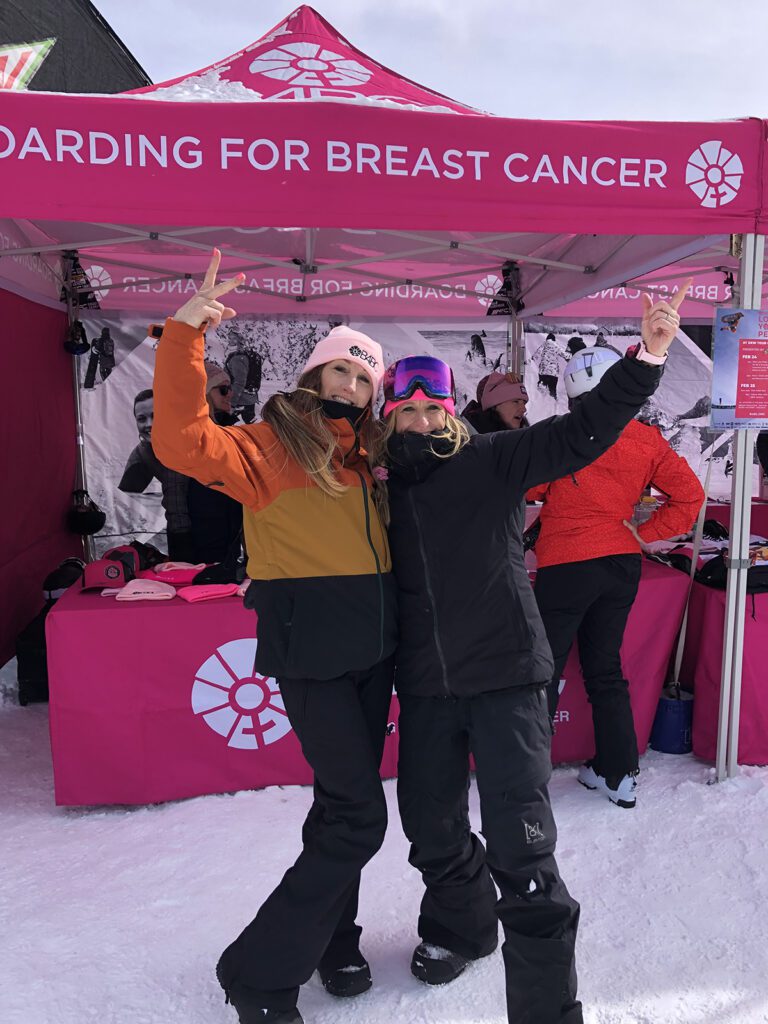
I’m going to have to disagree with you because I think you are very relevant! We have such an opportunity in snowboarding to connect different generations in a way that enriches the whole culture.
I could see all my possibilities, but nobody else could at this point. So I was like, This is really sucks. I really want to be involved. I love this and I have a vision for this still, especially for women. And blah, blah, blah, all the things. Well, it wasn’t as easy as I thought. I got a lot of no’s. But I thought, I love snowboarding. It doesn’t need to be like that for me. I can just snowboard however I want and that’ll be great. I decided now I have more time, I could go with Dave on more of his work trips.
So, I did that, and that was kind of like a reentry to a lot of people that I haven’t seen in a while. And then Lisa Hudson from Boarding for Breast Cancer said, “As much as you want to be involved, we would love to have you.” That was so awesome. I got an open door. Yes! I started going to more B4BC events and it’s just been incredible. I’m so thankful. Reentering Boarding for Breast Cancer has been the number one thing to get back in the industry.
In your early career, when you were breaking trail as a snowboarder and a woman rider, I’m sure you faced challenges or roadblocks at times. Did you find parallels during this period of re-entry compared to earlier in your career?
It’s different because I could stand on my performance back then. Being a top-level competitor, companies could market me. It’s different now because I don’t have that. I have nothing to stand on in the industry, and I haven’t done anything in the business end. I only have my past, and I don’t want to say people don’t care about my past, they do, but it’s different. That’s not going to convince people, especially when I have been out of it for so long. I think to fight for something, you have to have grounds to fight for it, and I don’t feel like I have that at the moment. I have to recreate myself and honestly, I don’t know what that looks like. I don’t know what my role in snowboarding’s going to be. I just know I love snowboarding, period. So I’m going to do what I love, and if that’s the end of the story for me, that is enough. I will snowboard, and if there’s more and if I can offer somebody something of value from my history, from my experience, then awesome.
I’m going to discover what that is. I’m going to keep doing things that work out with people that give me the green light. Lisa gave me a green light for Boarding for Breast Cancer. I love it. Pat Bridges gave me an opportunity to ride in the World Quarterpipe Championships. I was scared out of my mind, but I was like, I’m doing it. He thinks I can do it, then I’m going to try. I showed up.
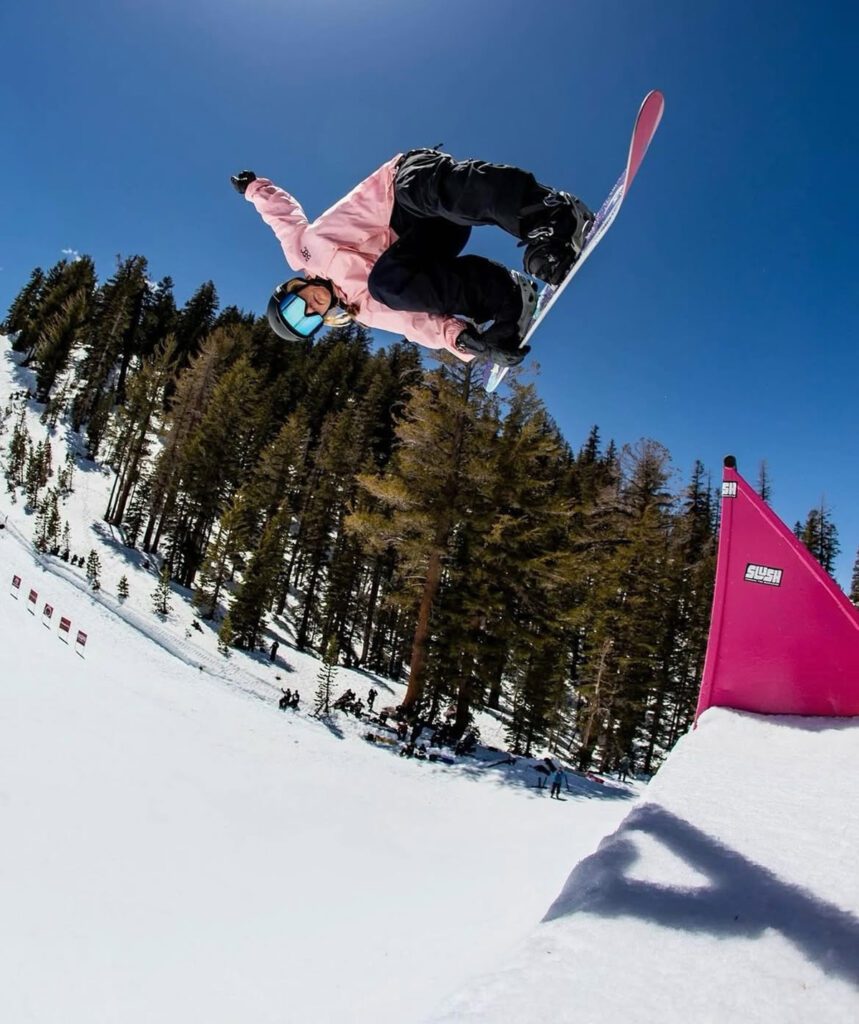
PHOTO: MARY WALSH
And won an award!
I learned so much from that. I’m so thankful. I decided to write a book and it’s taken me five fricking years, ha. I wrote the book because the moms I hang out with, I tell them stories about snowboarding and their minds are blown by things that were just so normal to me. Over and over, I kept hearing, “You have to write some of these stories down.” I always thought, I don’t even like to write! Turns out, I do like to write.
That’s so cool.
So, thank god for friends. Thank god for people who see more in me than I see in myself. And then I was like, You know what? I’ve had experiences that 0.5% of people have in the world, and I’ve learned so much, so I need to learn how to write. So, I signed up for a writing class. It was “how to write a book.” In it, the teacher broke down the structure of fiction storytelling and what elements are a part of that. We did some exercises, and then it was time to write. And I was like, Okay, now what do I write?
Classic writer question, ha.
So I put my stories down in a structure and I just started building them. It took me five years because it’s hard! It’s emotional writing.
Yes, writing can be a bit masochistic. Ha. What was your writing process like?
I wrote key memories, and then I dug out my journals and photos. I went back to the old magazines. When I decided what stories I wanted to highlight, I would do a deeper dive into researching those times. The first phase was getting as detailed as I could in writing, but really sloppy. I would try to pick out the people and the feeling and conversations because when I started thinking about these specific moments, I put myself back there and I remembered a lot.
And then once I got my structure and my storyline the way I wanted, then I edited. I had to choose which moments to go deep in and which to cut – the injuries, the laughter, the pain, the hard parts. It was kind of emotionally draining. It’s also hard to spend that much time sitting on your butt; I like to be out and about, so it was hard to get into writing. And once I got into it, I didn’t want to stop because the process to get me in the mind space, it was so hard for me. The whole process is laborious, but so positive and I’m so glad I did it.
It’s a behemoth of a task to write a book. What was it like reflecting on your experiences in snowboarding? Because not only are you looking at your life, but you’re also looking at a large part of snowboarding’s history.
I think the best way to respond to that question is that my excitement on snow right now is a lot because of my reflection throughout the process of writing this book. I feel so grateful for being a part of this sport and in that era that I did. I mean, I can’t even believe I had that life. So that’s one level. I feel really grateful for how everything happened. And then to reflect on the history of our sport, because when you’re living it, you’re just doing your thing and having a great old time. Whatever happens, you’re not expecting it to make history, you know what I mean? And then during that process, the Smithsonian calls and says, “Hey, we want to put your board in an exhibit.” Really? That’s crazy. And even talking with Gaylene [Nagel, former Sims marketing director] about my sunflower board, I learned more details because I was writing a book. I didn’t know some of these conversations she had with the company and the challenges she faced. She never made a big deal of it. She did all of this because she had a vision and believed in it. As a marketing director, she even told the company she’d cover the costs herself if the board didn’t sell and personally called key shops to place it in consignment when reps wouldn’t push it. My board sold out. It sold more than any other board in the Sims line. It proved there was a huge market for women and the floodgates opened for women’s products in snowboarding. It just showed me that the character of some of the people that I have been around is exceptional and you don’t run into people like this every day. Yeah, so the history and the people and then our culture of snowboarding, how it kind of evolved from then to now.
What makes you excited in snowboarding right now?
I am really excited to see this newer generation of snowboarders. They’re so cool, so kind, and really enthusiastic. They care about style, which I think is so important. I think this new wave of snowboarders, especially the girls, are the coolest. They’re just so excited and inviting. I love that, and it makes me want to be a part of snowboarding. When I go up to the top of the halfpipe, it does not make me want to be a part of the sport, but when I go to the minipipe or The Uninvited, the Burton Mystery Tour or Homesick, I can relate to people. They’re having fun, they’re doing hard stuff. I think the joy of snowboarding is at these events.I’m really stoked to be a part of Boarding for Breast Cancer. I can’t believe how many people we’ve been able to reach with our message of education and prevention. As a co-founder, I’ve witnessed firsthand the positive impact of educating young people about breast cancer, and it’s good to be back, boots on the ground, with this org. It’s allowed me to go to different locations and meet a lot of people. I love the people and I love our culture. I just love snowboarding. I still love going off jumps. I still like riding the halfpipe. I still love riding powder. I like it all. And I feel fortunate that my body feels good, too, that I am able to ride a lot, and I feel strong and healthy. I am really thankful. I am just going back to my roots of how it felt when I first learned, that’s how I feel again.
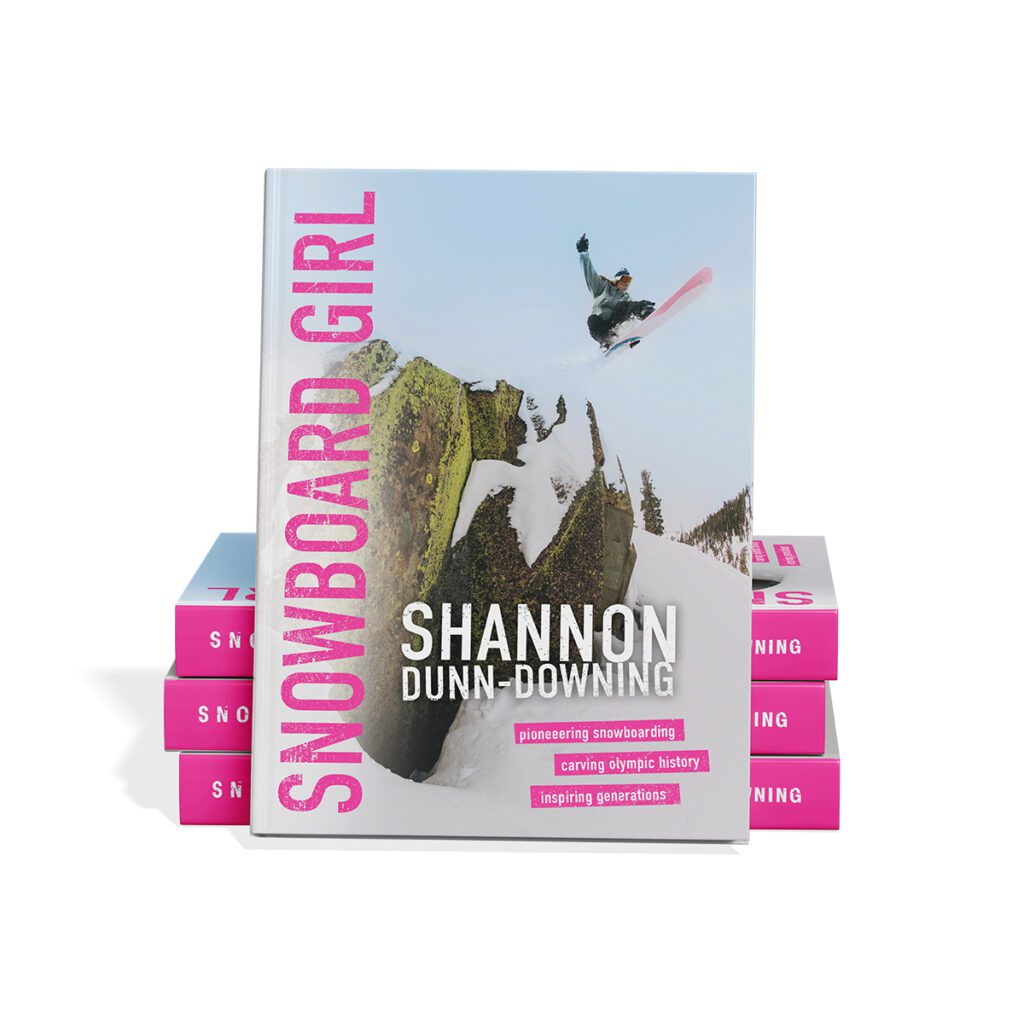
You’re the first to see Shannon’s upcoming memoir cover, Snowboard Girl. The book will release in December 2025.
For updates-follow Shannon on Instagram @Shannon_Dunn__Downing

